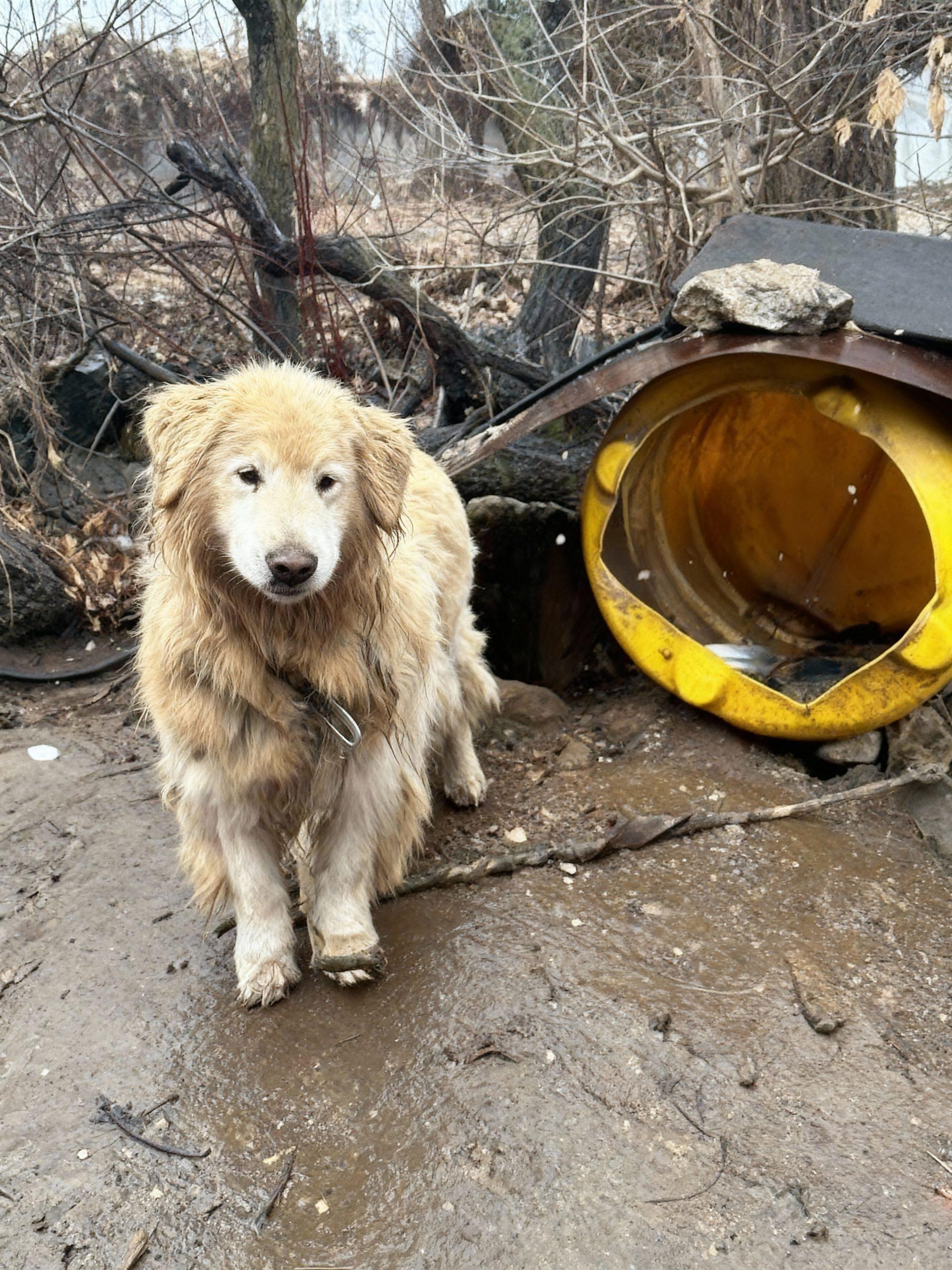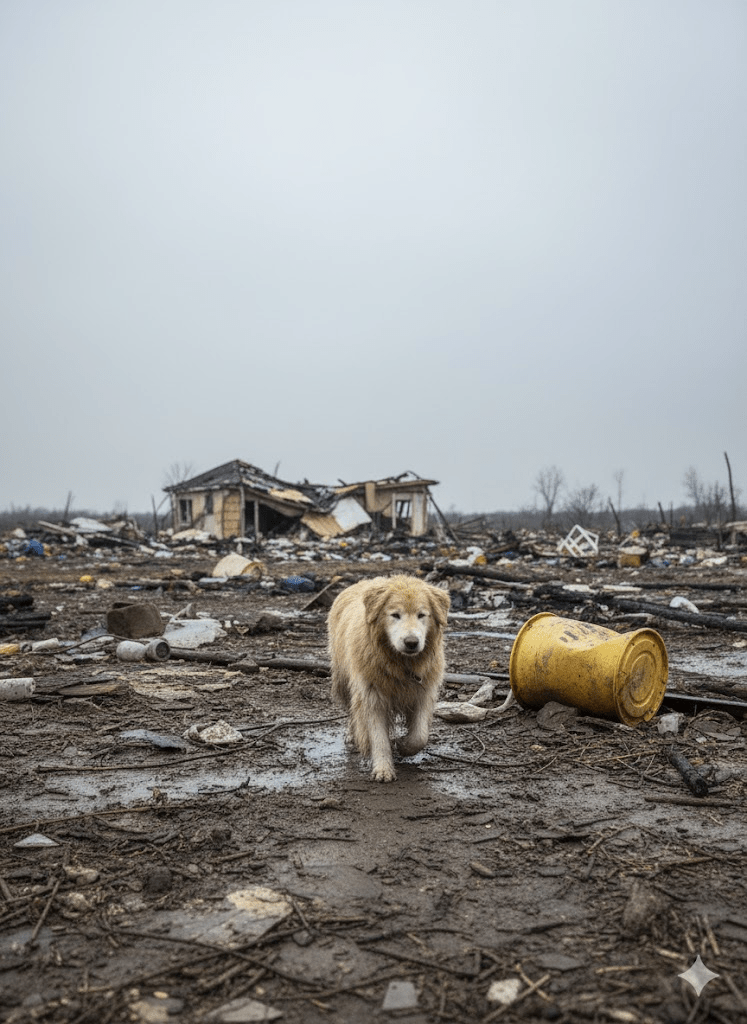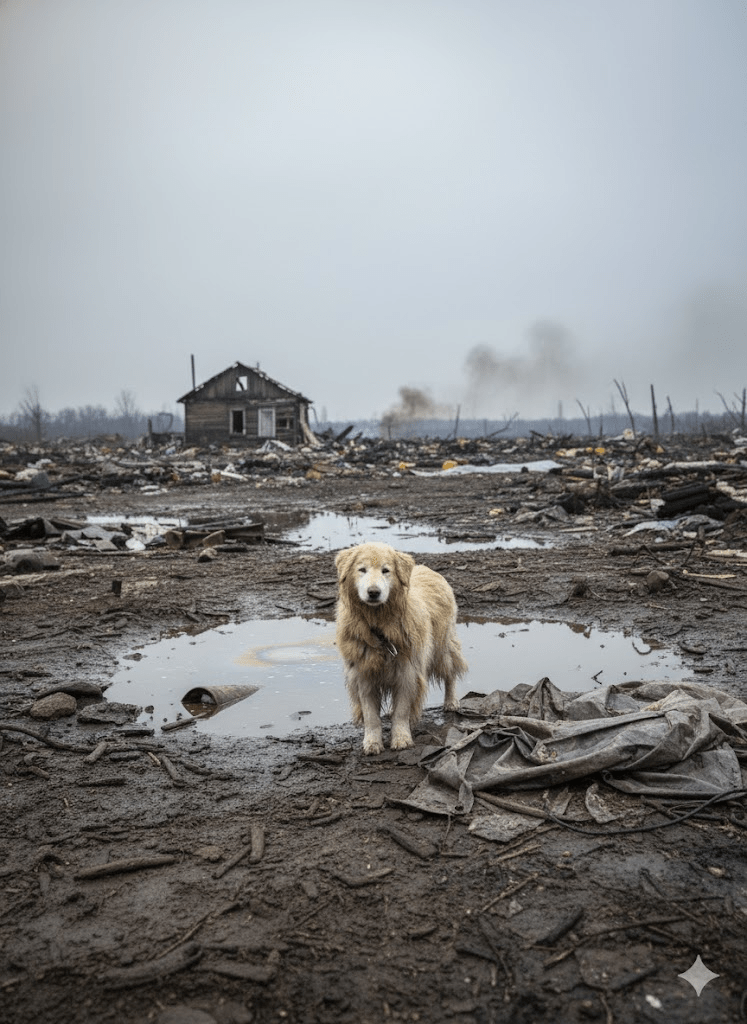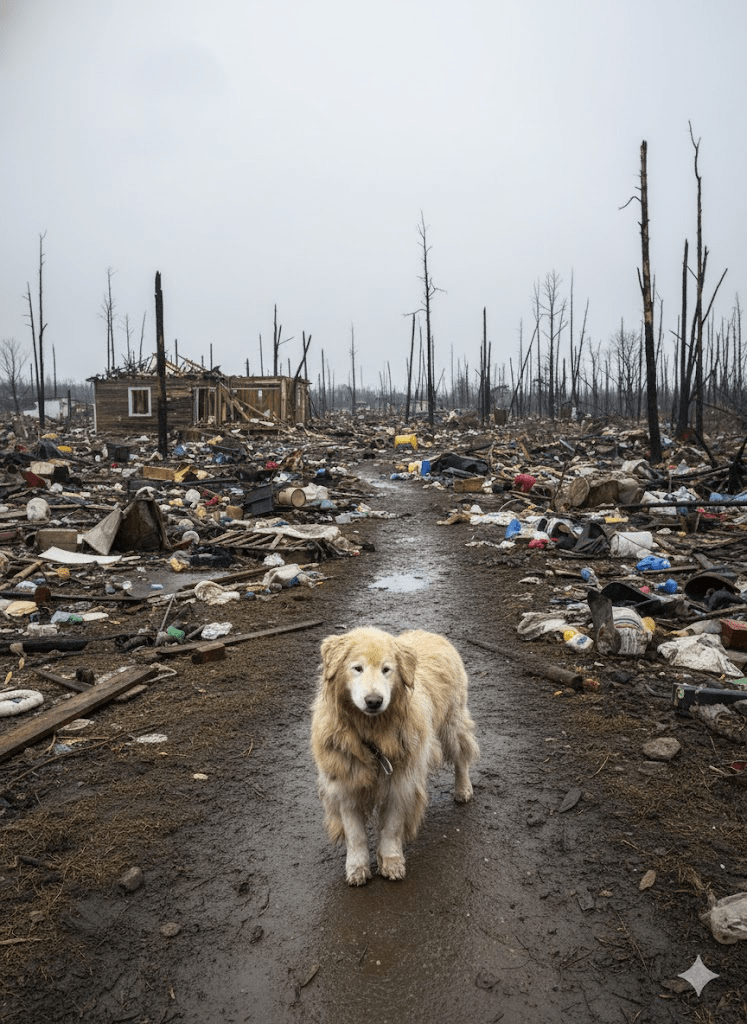The aftermath of any major disaster often brings with it heart-wrenching stories of human resilience and loss, but amidst the chaos, another silent tragedy unfolds – the profound impact on animals. Pets, livestock, and wildlife, often overlooked in the immediate response, face immense challenges, from displacement and injury to starvation and disease. Their stories, like the one captured in the accompanying image of a lone, mud-splattered dog amidst debris, serve as a poignant reminder of the broader ecological and ethical responsibilities we bear in times of crisis. This article aims to shed light on the often-underestimated plight of animals in disaster zones, advocating for their inclusion in emergency preparedness and response efforts, and highlighting the critical need for coordinated action to protect these vulnerable, voiceless victims. The journey of recovery for communities is inextricably linked to the well-being of all its inhabitants, including its animal populations.

Immediate Post-Disaster Challenges
In the immediate wake of a disaster, animals face a brutal set of challenges. For pets, the sudden destruction of homes often means separation from their owners. Confused, frightened, and disoriented, many roam aimlessly through the wreckage, susceptible to injuries from sharp debris, burns from fires, and exposure to the elements. The lack of familiar food and water sources quickly leads to dehydration and starvation. For those trapped, the situation is even grimmer, as rescue efforts often prioritize human lives, leaving animals to suffer in silence. The psychological trauma for these animals cannot be overstated; the loss of their stable environment and the presence of unfamiliar and terrifying stimuli can lead to lasting behavioral issues, fear, and aggression, even if they are eventually reunited with their families or adopted.

Health Crises and Environmental Hazards
Beyond immediate physical dangers, disaster zones present a myriad of health hazards for animals. Contaminated water sources become breeding grounds for bacteria and parasites, leading to widespread outbreaks of disease. Exposure to toxic chemicals released from damaged infrastructure or industrial sites can cause severe internal injuries and chronic illnesses. Furthermore, the breakdown of sanitation systems results in accumulated waste, attracting vectors of disease like rodents and insects, further compromising animal health. Veterinary care, if available, is often overwhelmed, and access to essential medications and treatments becomes severely limited, exacerbating the suffering of injured and sick animals. The environmental disruption also removes natural shelter and foraging opportunities for wildlife, forcing them into closer contact with human populations and increasing the risk of zoonotic disease transmission.

Challenges for Livestock and Working Animals
Livestock and working animals, such as farm animals, police dogs, or search and rescue dogs, face distinct but equally devastating challenges. For farmers, the loss of their animals can mean the destruction of their livelihood and their only source of income, leading to profound economic and emotional distress. Animals like cattle, sheep, and poultry, if not killed outright, may be left without shelter, food, or water, making them vulnerable to disease and predators. The logistics of evacuating large numbers of livestock are complex and often impossible in rapid-onset disasters, leaving many stranded. Working animals, while often highly trained and valued, can also be injured or separated from their handlers, losing their purpose and facing uncertain futures. The economic ripple effects of these losses can be significant, impacting local food supplies and agricultural economies for years to come.







